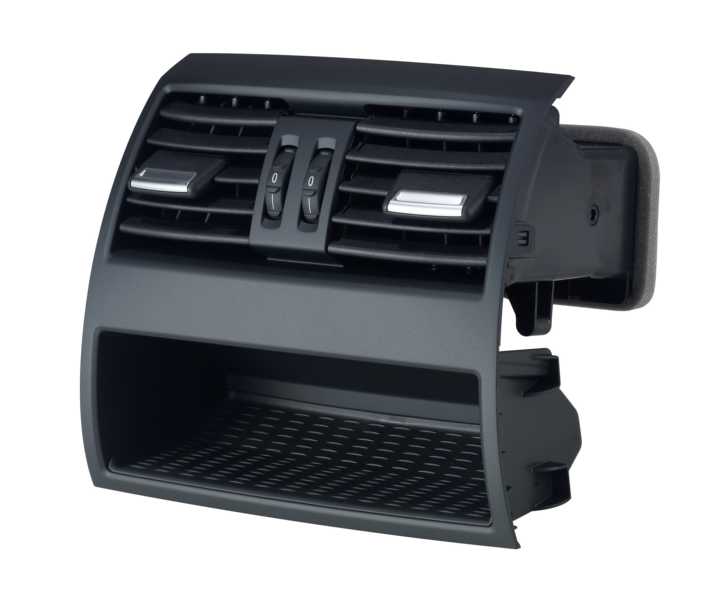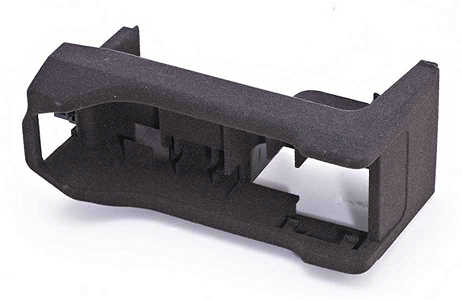Injection Molding ABS: A Comprehensive Guide for Manufacturing Excellence
Injection molding is a highly versatile manufacturing process used to produce plastic parts in large quantities with exceptional precision and efficiency. When it comes to injection molding, ABS (Acrylonitrile Butadiene Styrene) stands out as a popular thermoplastic material due to its remarkable properties and extensive applications. In this comprehensive guide, we will delve into the world of injection molding ABS, exploring its material properties, the injection molding process, best practices, and post-injection molding considerations.
Understanding ABS Material Properties
ABS possesses a unique combination of physical, chemical, and mechanical properties that make it an ideal choice for injection molding applications. Let’s explore these properties in detail.
Physical Properties of ABS
ABS exhibits a moderate density, typically ranging from 1.03 to 1.06 g/cm³. Its melting point falls within the range of 200 to 260°C, allowing for easy processing during injection molding. Furthermore, ABS offers commendable tensile and flexural strength, enabling it to withstand demanding mechanical loads. Its exceptional impact resistance ensures durability, making it suitable for applications prone to impacts or rough handling.
Chemical Properties of ABS
ABS showcases impressive chemical resistance, allowing it to withstand exposure to various substances without significant degradation. It demonstrates resistance to acids, alkalis, and most organic solvents. Additionally, ABS boasts excellent environmental resistance, making it suitable for both indoor and outdoor applications. Moreover, ABS is known for its flame retardancy, offering enhanced safety in certain industries.
Mechanical Properties of ABS
ABS exhibits a desirable balance of hardness, elasticity, and toughness. Its hardness ensures stability and resistance to surface damage, while its elasticity allows for flexibility without compromising structural integrity. The inherent toughness of ABS enables it to absorb energy during impacts, minimizing the risk of fracture or breakage.
Injection Molding Process
The injection molding process involves several crucial steps that ensure the successful production of ABS parts. Let’s examine these steps in detail.
Clamping: The first step in the injection molding process is clamping, where the mold halves are securely held together by the clamping unit of the machine. This ensures precise cavity alignment and prevents any leakage during subsequent stages.
Injection: The molten ABS material is injected into the mold cavity through the nozzle and the sprue, guided by the injection unit of the machine. The pressure and speed of injection must be carefully controlled to achieve optimal results.
Cooling: After injection, the mold is cooled to solidify the molten ABS material. The cooling process must be properly managed to ensure uniform cooling and prevent warping or other defects.
Ejection: Once the part has cooled and solidified, it is ejected from the mold using the ejection system. Proper design of the ejection system is critical to avoid damage to the part or the mold.
Design Considerations for Injection Molding ABS
Designing for injection molding ABS requires careful consideration of various factors to ensure successful manufacturing. Here are some key design considerations to keep in mind:
Wall Thickness: Maintaining uniform wall thickness throughout the part helps prevent defects such as sink marks and warping. Ideally, a consistent wall thickness of 2-4 mm is recommended for ABS injection molding.
Draft Angle: Incorporating draft angles (typically 1-3 degrees) on vertical surfaces allows for easy ejection of the part from the mold, reducing the risk of damage.
Ribs and Bosses: Ribs and bosses provide structural support to the part. Proper design and placement of these features ensure adequate strength without compromising moldability.
Gate Design: The gate is the entry point for molten ABS material into the mold cavity. Selecting the appropriate gate type and location is crucial for achieving optimal filling and minimizing part defects.
Venting: Proper venting is essential to allow for the escape of air and gases during the injection molding process. Insufficient venting can lead to trapped air pockets, resulting in surface defects such as bubbles or voids.
Surface Finish: Consider the desired surface finish for the ABS part. Smooth surfaces may require additional polishing or texturing of the mold to achieve the desired outcome.
Injection Molding ABS: Best Practices
To achieve optimal results in injection molding ABS, it is important to follow best practices throughout the entire process. Let’s explore some key areas of focus:
Material Selection and Preparation: Choose the appropriate ABS grade for your specific application. Different ABS grades offer varying properties, such as high heat resistance, improved impact strength, or enhanced chemical resistance. Additionally, ensure that the ABS material is properly dried before injection to prevent moisture-related defects.
Machine Selection and Setup: Selecting the right injection molding machine is crucial for successful ABS production. Consider factors such as machine size, tonnage, and capabilities to meet the specific requirements of your project. Proper setup of barrel temperature, injection speed, and pressure control is essential to achieve consistent results.
Mold Design and Optimization: Collaborate with experienced mold designers to create an optimized mold for ABS injection molding. Consider factors such as mold material, runner and gate design, cooling channel layout, and parting line placement. Each element plays a vital role in achieving quality parts with minimal defects.
Process Optimization and Troubleshooting: Continuously monitor and optimize the injection molding process to ensure consistent quality. Adjust parameters such as melt temperature and viscosity to achieve the desired flow characteristics. Conduct cycle time optimization to maximize production efficiency. In the event of defects, troubleshoot and identify the root cause to implement effective solutions.
Common Defects and Solutions: Understanding common defects that can occur during ABS injection molding enables proactive problem-solving. Sink marks, caused by improper cooling or insufficient packing, can be addressed by adjusting cooling or packing pressure. Warpage can be minimized through appropriate mold and cooling design. Flash can be reduced by optimizing clamping force and improving mold alignment. Voids can be mitigated by adjusting injection pressure and temperature settings.
Post-Injection Molding Considerations
Once the ABS parts have been successfully injection molded, there are additional considerations to ensure product quality and adherence to specifications:
Secondary Operations: Depending on the application, secondary operations such as part removal, trimming, and surface finishing may be required. Carefully remove parts from the mold to avoid any damage or deformation. Finishing processes like polishing, painting, or assembly may be necessary to achieve the desired final product.
Quality Control and Inspection: Implement stringent quality control measures to ensure dimensional accuracy and structural integrity of the ABS parts. Conduct visual inspections to identify any surface defects. Perform mechanical testing to evaluate the strength, impact resistance, and other mechanical properties.
Recycling and Sustainability: Embrace sustainable practices by considering the recyclability of ABS and implementing recycling initiatives for any scrap or waste material generated during the injection molding process. Explore opportunities to minimize environmental impact and promote a circular economy.
At Sincere Tech, we are dedicated to maintaining our position as a leading plastic mold company by embracing industry advancements and anticipating future trends. We actively explore innovative materials and composites that offer improved performance and sustainability. Through ongoing investments in research and development, we deliver cutting-edge solutions that address the evolving needs of our customers. As one of the best injection mold suppliers in China, we pride ourselves on our commitment to excellence.
In line with our commitment to sustainability, we prioritize environmentally friendly practices. We proactively seek sustainable alternatives, such as biodegradable polymers, and implement recycling initiatives to minimize the environmental impact of our manufacturing processes. By choosing our custom injection molding services, you can align your brand with sustainable manufacturing practices and contribute to a greener future.
Quality is of the utmost importance to us, and we maintain stringent quality control measures throughout the entire manufacturing process. Our state-of-the-art facilities and skilled technicians ensure that each product undergoes rigorous inspection and testing, guaranteeing exceptional performance, reliability, and customer satisfaction.
When you partner with Sincere Tech as your preferred China mold maker, you can expect the highest level of professionalism, expertise, and innovation. We are dedicated to helping you bring your ideas to life, delivering superior products that excel in performance, durability, and cost-effectiveness.
Our expanded capabilities include:
- Rapid Prototyping: We offer rapid prototyping services to quickly transform your concepts into tangible prototypes, allowing for iterative design improvements and accelerated product development.
- Precision Tooling: Our advanced tooling capabilities enable us to create high-quality molds with tight tolerances, ensuring consistency and precision in your injection-molded products.
- Overmolding: We specialize in overmolding, which allows for the combination of multiple materials or components, resulting in enhanced functionality, aesthetics, and durability.
- Insert Molding: Our expertise in insert molding enables us to securely encapsulate inserts within the molded parts, facilitating efficient assembly and enhancing product performance.
- Two-Shot Molding: With two-shot molding, we can produce complex, multi-material components in a single operation, reducing assembly requirements and enhancing design possibilities.
- Value-Added Services: In addition to injection molding, we offer a range of value-added services, including product assembly, packaging, and logistics support, streamlining your supply chain and reducing costs.
Partner with Sincere Tech Mould suppliers for your custom injection molding needs, and benefit from our comprehensive capabilities, unwavering commitment to quality and sustainability, and our drive to exceed your expectations at every step of the process. Together, let’s bring your innovative ideas to life.
Conclusion
Injection molding ABS offers manufacturers a versatile and reliable solution for producing high-quality plastic parts. By understanding the material properties of ABS, optimizing the injection molding process, and adhering to best practices, manufacturers can achieve exceptional results. Continuous improvement, troubleshooting, and quality control measures contribute to consistent production and customer satisfaction. Embrace the opportunities that ABS injection molding presents and stay at the forefront of manufacturing excellence.
